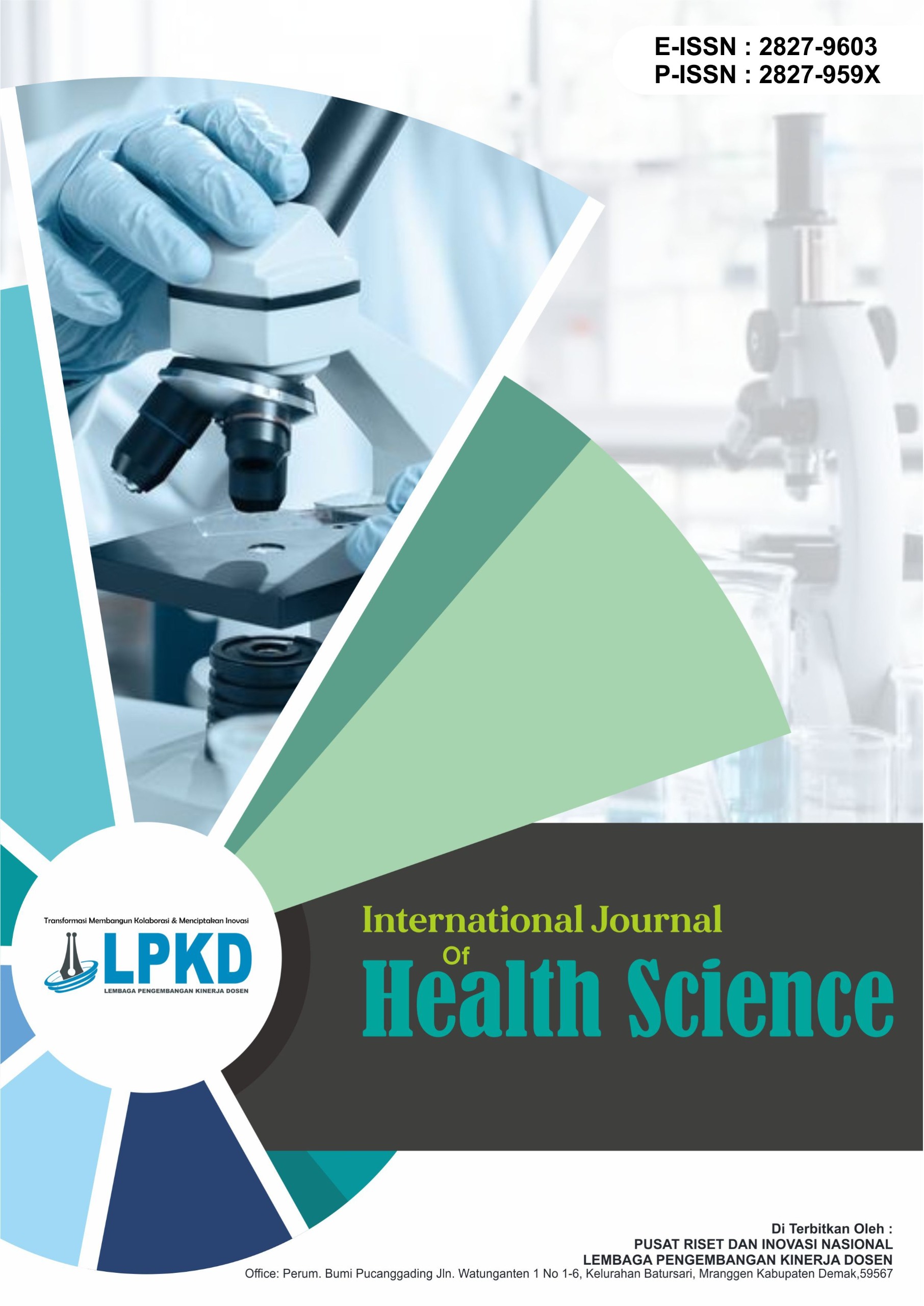Case Report: The Effect of Murottal Therapy of Surah Ar-Rahman on the Stability of Vital Signs in Infants with Severe Asphyxia
DOI:
https://doi.org/10.55606/ijhs.v5i2.5079Keywords:
neonatal asphyxia, murottal therapy, Surah Ar-Rahman, vital signs, newbornAbstract
Neonatal asphyxia is a critical condition and one of the leading causes of neonatal mortality, especially in developing countries such as Indonesia. This condition is marked by impaired oxygen exchange, leading to hypoxemia, hypercapnia, and metabolic acidosis. Prompt and appropriate management is essential, including the use of non-pharmacological interventions such as Qur’anic murottal therapy. Surah Ar-Rahman is often chosen for its soft and soothing rhythm, which is believed to have a calming physiological effect on infants. This study used a case study design with an interventional approach involving one infant diagnosed with severe asphyxia treated in the NICU of RSUD Tjitrowardoyo Purworejo. The intervention involved playing a recitation of Surah Ar-Rahman for 15–30 minutes daily over five consecutive days. Vital signs monitored included oxygen saturation, heart rate, respiratory rate, and body temperature. Results showed an increase in oxygen saturation from 87% to 100%, a decrease in heart rate from an average of 137 to 127.4 bpm, a reduction in respiratory rate from 53.6 to 44.8 breaths/minute, and a slight temperature decrease from 37.36°C to 37.3°C. These findings suggest that Qur’anic murottal therapy, particularly Surah Ar-Rahman, can contribute to the stabilization of vital signs in neonates with severe asphyxia. This therapy may serve as a supportive intervention in neonatal nursing care and is recommended for use both in clinical settings and at home.
Downloads
References
[1] H. Rustan, “FAKTOR-FAKTOR YANG BERHUBUNGAN DENGAN KEJADIAN ASFIKSIA NEONATORUM DI RSU ST. MADYANG PALOPO,” J. Fenom. Kesehat., vol. 5, no. 2, pp. 81–87, 2022, [Online]. Available: https://ojs.ikbkjp.ac.id/JFK/article/view/157
[2] D. L. Lestari, “Asfiksia Neonatorum,” Sci. J., vol. 3, no. 1, pp. 08–15, 2024, doi: https://doi.org/10.56260/sciena.v3i1.124.
[3] A. Seto, “HUBUNGAN KETUBAN PECAH DINI DENGAN KEJADIAN ASFIKSIA PADA BAYI BARU LAHIR DI RSUD KOLONEL ABUNDJANI BANGKO TAHUN 2021,” J. Kesehat. dan Sains Terap. STIKES MERANGIN, vol. 8, no. 2, pp. 18–22, 2022, [Online]. Available: https://ojs.stikesmerangin.ac.id/index.php/jkst/article/view/108%0A
[4] N. Fidayanti, E. Iriyani, and M. A. Ashari, “FAKTOR-FAKTOR YANG MEMPENGARUHI KEJADIAN ASFIKSIA PADA BAYI BARU LAHIR DI RSU PKU MUHAMMADIYAH BANTUL YOGYAKARTA TAHUN 2022,” Cerdika J. Ilm. Indones., vol. 3, no. 11, pp. 1086–1096, Nov. 2023, doi: 10.59141/cerdika.v3i11.706.
[5] L. Sumantiaa, Ayatullah, and N. Jannah, “Faktor-Faktor Yang Berhubungan Dengan Kejadian Asfiksia Neonatorum Di RSUD Kota Bima,” Sci. J. Heal., vol. 1, no. 1, 2024, [Online]. Available: https://jurnal.stikesyahyabima.ac.id
[6] Y.-J. Su, W. Liu, R. Xing, Z. Yu, Y. Peng, and W. Luo, “Prevalence and risk factors associated with birth asphyxia among neonates delivered in China: a systematic review and meta-analysis,” BMC Pediatr., vol. 24, no. 1, p. 845, Dec. 2024, doi: 10.1186/s12887-024-05316-7.
[7] Z. Li, S. Wang, and P. Wang, “Associations between low birth weight and perinatal asphyxia: A hospital-based study,” Medicine (Baltimore)., vol. 102, no. 13, p. e33137, Mar. 2023, doi: 10.1097/MD.0000000000033137.
[8] Y. Putriana and W. Aliyanto, “EFEKTIFITAS THERAPI MUROTTAL TERHADAP POLA TIDUR BAYI BBLR,” MIDWIFERY J., vol. 1, no. 4, 2021, doi: 10.33024/mj.v1i4.5679.
[9] I. Susiloningtyas, E. Sutrisminah, Y. Astuti, and M. Jayanti, “Efek Terapi Murottal Surat Ar-Rahman terhadap Tingkat Kecemasan Ibu Bersalin Kala I,” J. Kesehat., vol. 13, no. 3, pp. 509–515, Dec. 2022, doi: 10.26630/jk.v13i3.2834.
[10] H. Mukhlis and M. Marini, “Pengaruh terapi murottal terhadap denyut nadi dan pernafasan pada bayi dengan berat badan lahir rendah,” Indones. Berdaya, vol. 1, no. 1, pp. 29–37, Feb. 2020, doi: 10.47679/ib.202015.
[11] W. A. Bayih et al., “Prevalence and associated factors of birth asphyxia among live births at Debre Tabor General Hospital, North Central Ethiopia,” BMC Pregnancy Childbirth, vol. 20, no. 1, p. 653, Dec. 2020, doi: 10.1186/s12884-020-03348-2.
Downloads
Published
How to Cite
Issue
Section
License
Copyright (c) 2025 International Journal Of Health Science

This work is licensed under a Creative Commons Attribution-ShareAlike 4.0 International License.







